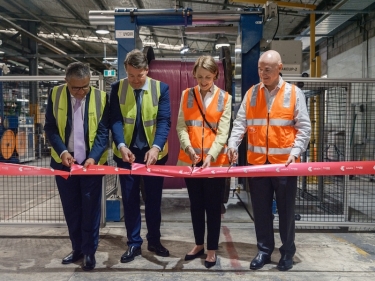Prysmian's optical cable production lines are located in Dee Why, Sydney, and have expanded their operations to leverage advanced manufacturing technology that will enhance and increase the production of locally-made state-of-the-art cable.
This cable will be readily consumed by Telstra InfraCo, which is building an Intercity fibre network in response to the ever-growing demands for fast and capable digital networks. The manufacturing tech is more environmentally sustainable than previous options and also ensures cable that is suitable for Australia.
"The Intercity fibre network project will future-proof Australia's connectivity needs for the next 20+ years. We have already laid hundreds of kilometres of cables across the country and have commenced planning on several new fibre routes that will see all mainland capital cities connected," said Telstra InfraCo CEO Brendon Riley.
|
|
"The expansion of Prysmian's optical cable production lines, located in Dee Why in New South Wales, will be integral to the Intercity fibre project. Not only is this an investment in our nation's growth, connectivity, and digital prosperity, but the design of our network is uniquely Australian, with the cable adapted to be more resilient to our sometimes harsh conditions," Riley said.
"This significant investment into Australian-based skills, R&D, and manufacturing is the result of two years of collaborative research and development. Together with Telstra, we have designed a world-leading fibre optic cable that will support the current and future demand for high capacity, low-latency, fibre networks in Australia," said Prysmian executive VP digital solutions division Frederick Persson.
The new fibre optic cable is 59% smaller and 54% lighter than the previous design employed across Telstra's existing fibre network, and the reduced size and weight will directly reduce CO2 output by 35,000 tonnes. This also means the cable length on drums can expand from 5km to 12km.
The Intercity fibre network will deliver high-speed, high-capacity data between large population centres across Australia with transmission rates of up to 650Gbps. It will also enable express connectivity between capital cities with a recent simulated network trial reaching speeds of up to 61.3Tbps per fibre pair capacity.
The network adopts a Dual Cable Diverse Architecture, in which two separate fibre networks - express and foundation - will be built simultaneously. Australian capital cities will have a minimum of two diverse paths between each city, and this architecture significantly increases the network resiliency.












































